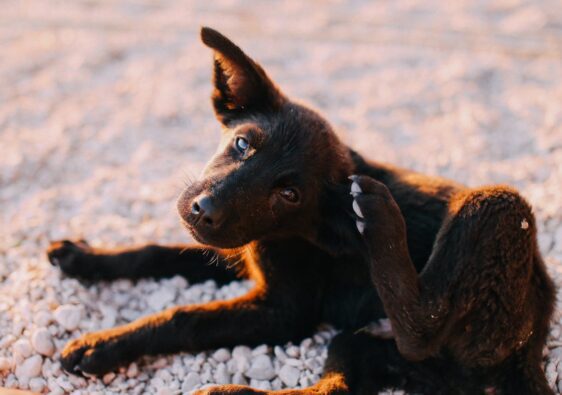The hustle and bustle of college life, where deadlines loom, exams await, and the pressures of academia are ever-present. Amid this whirlwind, college students find solace, not in solitude or textbooks, but in the gentle purring of a kitten or the playful wag of a dog’s tail. The bond between college students and their pets is a tale of companionship and unwavering loyalty. It’s a story that resonates across campuses, in dorm rooms, and off-campus apartments. Much like the careful consideration and assistance you’d seek to ‘do my research paper for me,’ this guide empowers college students to make a well-informed choice when selecting the perfect pet to accompany them on their educational journey.
College life can be lonely, stressful, and challenging. Yet, a furry, feathery, or scaly friend can offer a consistent source of comfort and joy. The stress of finals, the all-nighters, and the daily grind all become more bearable with a pet by your side. In this article, we’ll explore the myriad ways in which having a pet in college can positively impact your life.
However, with great companionship comes great responsibility. Making the right choice when it comes to pet ownership is paramount. Each pet is unique, and college students have specific considerations to keep in mind. The importance of making an informed decision when selecting a pet cannot be overstated. It’s not just about what’s cute or trendy; it’s about understanding your own lifestyle, needs, and capabilities to ensure a happy and healthy life for both you and your pet.
Assessing Your Lifestyle
The college student lifestyle is a dynamic and ever-changing one. It’s marked by packed class schedules, late-night study sessions, and the ebbs and flows of social activities. It’s crucial to understand this lifestyle before bringing a pet into the mix.
Time management and responsibilities are at the core of college life. Assessing your ability to dedicate time to a pet’s needs is essential. This includes daily care, exercise, and companionship. Consider how your class schedule, extracurricular activities, and social life may impact your pet’s daily routine.
Just as you’d seek the best dissertation writing services to excel in your academic pursuits, this guide equips college students with the knowledge needed to select the ideal pet that complements their college experience and ensures a harmonious life together. Financial considerations are not to be taken lightly. College students often operate on tight budgets, and pets come with expenses such as food, veterinary care, and grooming. Understanding the financial commitment is crucial to providing a good quality of life for your pet.
Space and housing restrictions can pose challenges for college students. Dorm rooms and apartments may have limited space, and some housing arrangements might not allow pets at all. Ensure that you’re aware of any restrictions and consider the space available for your pet to live comfortably.
Understanding your long-term commitment is perhaps the most critical aspect. Pets are not temporary companions; they’re lifelong commitments. You must think about your future, beyond college, and how your pet fits into your life after graduation.
Types of Pets for College Students
When it comes to choosing a pet as a college student, you’ll find a diverse array of options, each with its own unique set of characteristics, needs, and benefits. This chapter explores some of the most popular choices for college students and delves into the pros and cons of each, helping you make an informed decision about which pet is the perfect fit for your college journey.
Dogs:
Dogs are known for their unwavering loyalty, companionship, and boundless enthusiasm. Their playful nature and affectionate demeanor can make them fantastic college companions. However, they also come with a range of responsibilities and considerations that are crucial to keep in mind.
- Pros of Having a Dog:
- Companionship and emotional support.
- Motivation for exercise and outdoor activities.
- Protection and security.
- The joy of training and watching your dog grow.
- Cons of Having a Dog:
- Time-intensive; dogs require regular exercise and socialization.
- Space and housing restrictions may limit breed choices.
- Financial commitment for food, healthcare, and grooming.
- Potential for separation anxiety if left alone for extended periods.
Cats:
Cats are known for their independent nature and low-maintenance care. They are excellent options for college students who may have busy schedules and limited space. Understanding the nuances of living with a cat is key to a harmonious relationship.
- Pros of Having a Cat:
- Low maintenance; cats are independent and self-grooming.
- Space-efficient; they can adapt to smaller living spaces.
- Affectionate and provide companionship.
- Natural hunters, which can help with pest control.
- Cons of Having a Cat:
- Litter box maintenance and cleanliness.
- Potential for shedding and allergens.
- Some cats may have behavioral issues.
- Space restrictions in housing may require indoor-only cats.
Small Animals (e.g., hamsters, rabbits, guinea pigs):
Small animals are a great option for college students with limited space and time. They have their unique charms and requirements, making them suitable for those seeking companionship without the commitment of larger pets.
- Pros of Having Small Animals:
- Space-efficient and can thrive in cages or enclosures.
- Low maintenance and less time-demanding.
- Quiet and suitable for smaller living spaces.
- Provide opportunities for interaction and bonding.
- Cons of Having Small Animals:
- Shorter lifespan than some other pets.
- Specific habitat and dietary needs.
- Limited potential for outdoor activities.
- Careful handling to avoid injury to small animals.
Fish:
Aquariums can be mesmerizing and soothing, making fish a popular choice for college students. However, they require diligence and knowledge to maintain a healthy underwater ecosystem.
- Pros of Having Fish:
- Calming and visually appealing.
- Space-efficient, suitable for small living spaces.
- Low maintenance once the aquarium is established.
- Wide variety of fish species and tank setups.
- Cons of Having Fish:
- Initial setup can be costly.
- Regular water testing and maintenance is required.
- Limited interaction compared to furry or feathered pets.
- Potential for fish health issues and mortality.
Reptiles and Amphibians:
For those with a fascination for the exotic, reptiles and amphibians offer unique companionship. They have specific care requirements and are best suited to students with a genuine interest in these creatures.
- Pros of Having Reptiles and Amphibians:
- Fascinating to observe and study.
- Space-efficient, can thrive in tanks or terrariums.
- Low-maintenance once habitat is established.
- Unique pets for those with an interest in herpetology.
- Cons of Having Reptiles and Amphibians:
- Specialized care requirements, including temperature and humidity control.
- Limited interaction compared to mammals and birds.
- Long lifespan for some species, which requires a long-term commitment.
- Handling and hygiene practices are essential to prevent disease transmission.
Birds:
Birds can be delightful and interactive companions, but they come with their own set of considerations, particularly related to space and noise levels. Understanding their specific needs is key to a successful avian partnership.
- Pros of Having Birds:
- Social and interactive pets, some can talk or sing.
- Space-efficient, suitable for smaller living spaces.
- Lifespan varies by species, offering long-term companionship.
- Aesthetic appeal with vibrant plumage and varied species.
- Cons of Having Birds:
- Noise levels may be a concern in shared housing.
- Feather maintenance and potential for mess.
- Regular socialization and mental stimulation are essential.
- Some species can be prone to health issues requiring veterinary care.
By exploring these various pet options and weighing the pros and cons, you can make a well-informed decision that aligns with your college lifestyle and personal preferences. Each pet brings its unique charm, and the choice is ultimately a reflection of your individual needs and circumstances.
Adopting vs. Buying
Acquiring a pet is not just a transaction; it’s a moral choice. Ethical considerations should guide your decision-making process. When you acquire a pet, you’re taking on the responsibility of another living being. It’s crucial to ponder the ethics of where and how you get your pet. Are you contributing to the welfare of animals, or are you inadvertently supporting practices that might exploit them?
One of the noblest ways to bring a pet into your life is through adoption from animal shelters and rescue organizations. These institutions are havens for animals in need, providing a second chance for countless pets. By adopting, you not only save a life but also make room for other animals to be rescued. These organizations can match you with the right pet for your lifestyle, ensuring a win-win situation for both you and your new companion.
If you decide to purchase a pet, thorough research is essential. Reputable breeders, if you choose this route, should be committed to the well-being and health of their animals. Similarly, if you consider buying from a pet store, ensure it’s a responsible and ethical establishment that does not support puppy mills or other inhumane practices. Your purchasing decisions can either discourage or support these practices, so choose wisely.
Whether you adopt or purchase, budgeting for your pet is vital. Adoption fees from shelters usually cover initial vaccinations, spaying/neutering, and sometimes microchipping. When buying a pet, initial costs might include the purchase price, vaccinations, and spaying/neutering if not already done by the breeder. You’ll also need to factor in ongoing expenses such as food, grooming, and veterinary care. Understanding the financial aspects will ensure your pet receives the care it deserves without straining your finances.
Preparing for Your Pet
Pet-proofing is akin to childproofing but for your furry or feathered friend. This process involves making your living space safe for your pet by removing potential hazards, securing toxic substances, and creating designated pet-friendly areas.
From bowls and bedding to leashes and litter boxes, gathering the right supplies is crucial. The specific items you’ll need will vary depending on the type of pet you choose. A thorough inventory of essential supplies will help you be fully prepared for your new companion’s arrival.
Your pet’s well-being depends on proper financial planning. Setting up a budget for pet care can help you manage expenses effectively, ensuring that you can provide everything your pet needs, from food and grooming to regular veterinary visits.
Establishing a relationship with a trustworthy veterinarian is one of the most critical steps in pet ownership. Your vet will be your go-to resource for routine check-ups, vaccinations, and emergency care. Choosing a vet with whom you feel comfortable and who can provide quality care is essential for your pet’s health and your peace of mind.
Just as humans have health insurance, pets can benefit from pet insurance. It helps cover unexpected veterinary bills, ensuring that you can provide the best care for your pet without worrying about the financial burden. Understanding the ins and outs of pet insurance is a vital part of responsible pet ownership.



